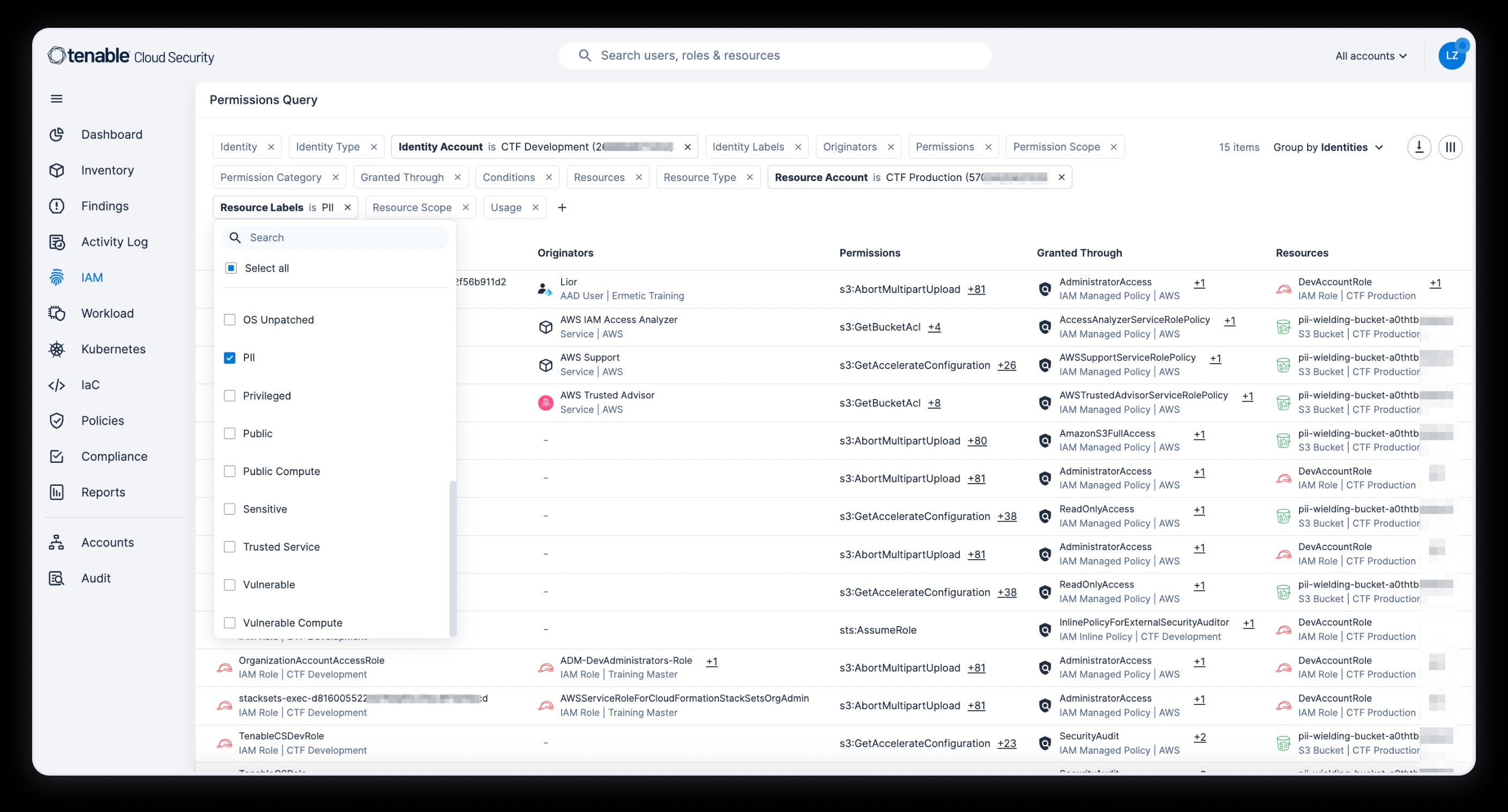
2024-8-28 21:0:0 Author: www.tenable.com(查看原文) 阅读量:8 收藏
DSPM solutions provide a comprehensive, up-to-date view into cloud-based data and risk. An integrated CNAPP and DSPM solution elevates this analysis to expose toxic combinations and security gaps across cloud environments.
As organizations ramp up their use of cloud-native applications, the amount of sensitive data stored in the cloud grows – as does the difficulty in managing and scaling data-related risk management and compliance. Hackers are motivated to get at data stored in the cloud. Employee data, customer information, business IP – it’s all (un)fair game.
Enter cloud native application protection (CNAPP) solutions. In light of the massive increase in data-related breaches - and their cost, integrating data security posture management (DSPM) in CNAPP is essential to reduce risk. It also simplifies security efforts, improves compliance and ensures that data security is an integral part of your overall security strategy.
See the demo
The superpower of a unified CNAPP
A quick concept review.
A CNAPP offers security and compliance for cloud-native applications throughout their lifecycle, across multiple clouds. Its superpower lies in providing a unified view and contextual analysis across infrastructure, workloads, identities and more. A CNAPP isolates exposures, including hidden toxic combinations, and pinpoints how to fix them.
DSPM tools – a $94 billion market projected to double by 2031(InsightScan) – focus specifically on security and compliance-readiness for data in the cloud. These tools continuously scan the environment to find data, including databases, object storage and data lakes, across cloud and service providers, flowing to or from, any location. They classify and protect data assets, ensure audit security policies and requirements, and detect data-related threats.
Using DSPM alone makes it difficult to maintain a centralized and deep view into sensitive data; where it’s stored, what kind it is, who can access it and how it is used. It’s like getting a view into the stars but not the galaxy. Inside a CNAPP, DSPM gives the needed illumination and context.
Let’s explore how a DSPM works.
Comprehensive visibility into data assets
A key DSPM function is to continuously provide a comprehensive, up-to-date view into cloud based data assets and risk. When joined with cloud security posture, this data analysis exposes discreet security gaps and toxic combinations and, importantly, the impact on data if exploited. Teams gain greater prioritization accuracy and focus around findings, mitigating alert fatigue.

Better data security and compliance
By implementing a DSPM-integrated CNAPP, you can reduce the risk of data breaches and non-compliance. DSPM solutions continuously assess compliance posture and ensure that cloud data is classified, protected and accessed according to policies and frameworks such as GDPR, HIPAA, and CCPA. You can automate policy enforcement and generate comprehensive, audit-ready reports to reduce compliance fire drills. Users can act quickly upon discovering misconfigurations, unauthorized access and potential security threats discovered in near real-time.
Managing data risk proactively
Proactive risk management is a cornerstone of cloud security. Integrating DSPM empowers teams to detect potential data risks, as well, and take action early, before they become big problems. Through the use of advanced analytics, DSPM capabilities detect anomalous patterns and behaviors that can indicate a security threat to your sensitive data. A DSPM integrated CNAPP provides actionable insights and recommendations for improving your overall data security posture, ensuring your organization stays a step ahead of evolving threats.
Faster, streamlined incident response
In the event of a security incident, time and action is everything. Integrated DSPM plays a vital role in streamlining the incident response process. By providing near real-time alerts and detailed forensic data, the solution helps security teams quickly identify the scope and impact of a breach. These insights speed up the process, enabling stakeholders to achieve containment and remediation and minimize potential damage. DSPM's integration with other CNAPP components, such as workload protection and cloud security posture management, enables a coordinated, efficient incident response, reducing downtime and maintaining business continuity.
Use case: Tenable Cloud Security with integrated DSPM
Tenable Cloud Security isolates and eradicates cloud risks across infrastructure, workloads, identities and data. Having recently acquired Eureka Security, we are now integrating leading DSPM capabilities into our CNAPP context mix - stay tuned as new features roll out.
In this use case, we show how you can use powerful permission querying to detect and filter for resources with certain types of sensitive data, such as digital identity or financial information, to understand and explore your risk exposure, and focus on prioritized security findings.
Conclusion
Integrated DSPM is an indispensable component of a robust CNAPP strategy. It extends comprehensive visibility and deep risk context to data assets, safeguarding data and keeping your security posture strong through automation and actionability.

Diane Benjuya
Diane Benjuya is a senior product marketing manager in cloud security with 20+ years in the field, more recently in the focus areas of cloud infrastructure and identity. When at leisure she enjoys a decent run and soul-lifting jam session. Diane holds a masters degree in linguistics.

Lior Zatlavi
Lior Zatlavi has more than 15 years of experience in cyber security, with most of that time as a security architect, product manager and developer for the Israeli government. Lior served in an elite cyber security unit of the Israel Defense Forces (retired with the rank of Major), after which he worked in a cyber security division of Israel's Prime Minister's Office. After leaving the public sector, Lior worked as an independent consultant, specializing in cloud security and identity management. Lior holds an M.Sc in Electrical Engineering from Tel Aviv University and a B.Sc in Applied Mathematics (cum laude) from Bar Ilan University, Israel.
如有侵权请联系:admin#unsafe.sh